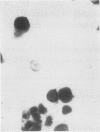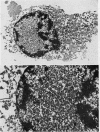Abstract
A technique is described whereby inclusion-bearing cells identified by light microscopy in stained smears of urinary sediment were reprocessed for examination in the electron microscope. The nuclei of the abnormal cells were found to contain numerous virus particles, 35 nm in diameter, which morphologically resembled papovaviruses. The technique was applied in this case to identify further the virus producing the cytopathic changes in the Papanicolaou smear. It could be particularly valuable for retrospective studies of mounted cytological or histological material when suitable specimens are no longer available for virological investigation.
Full text
PDF
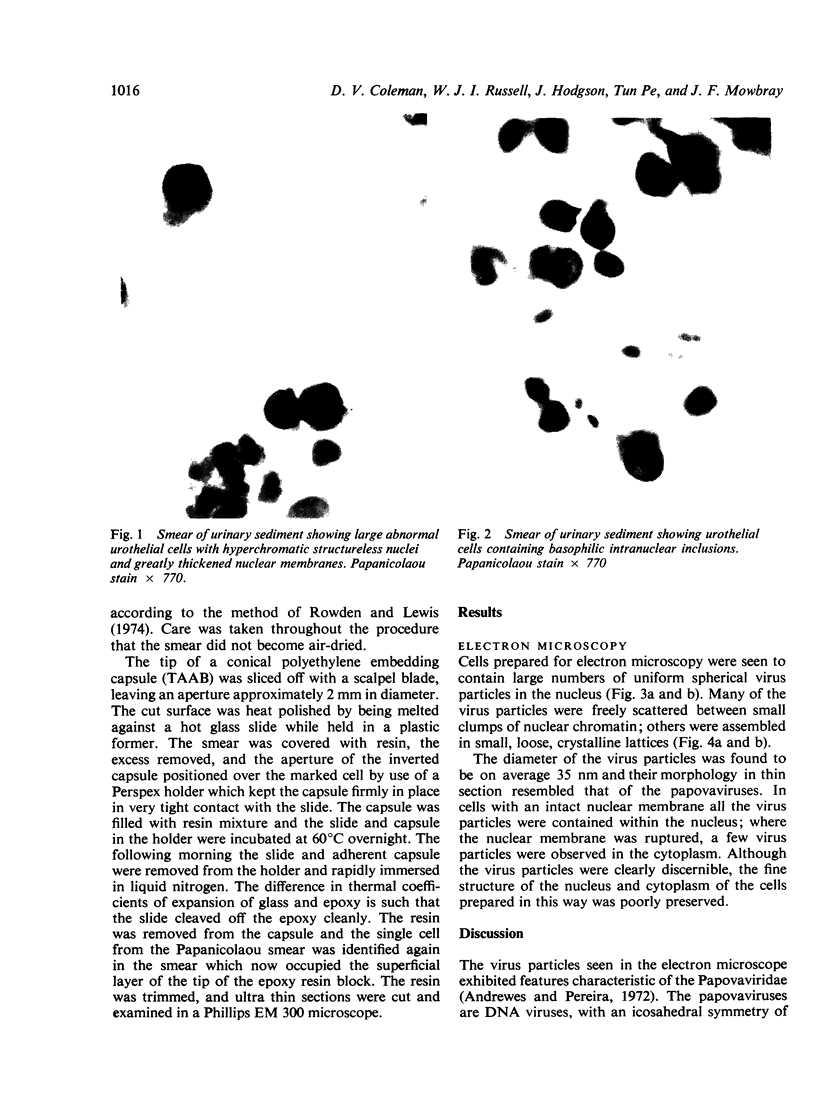

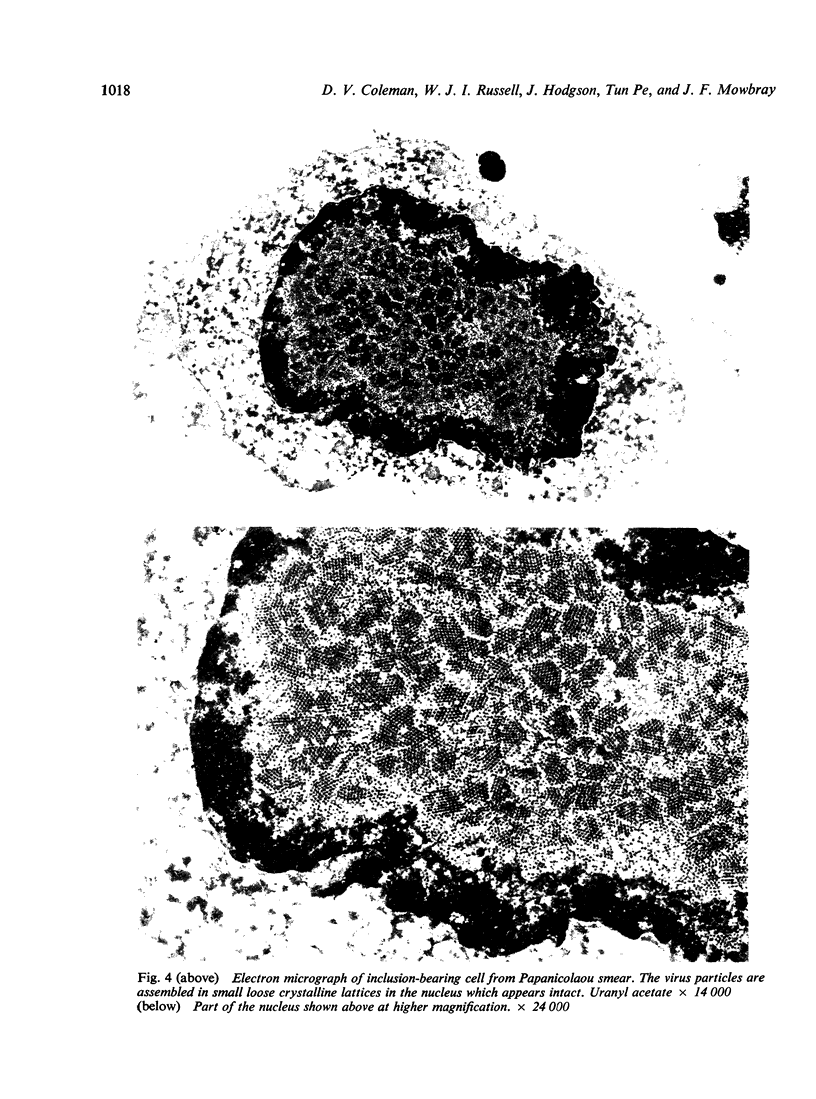
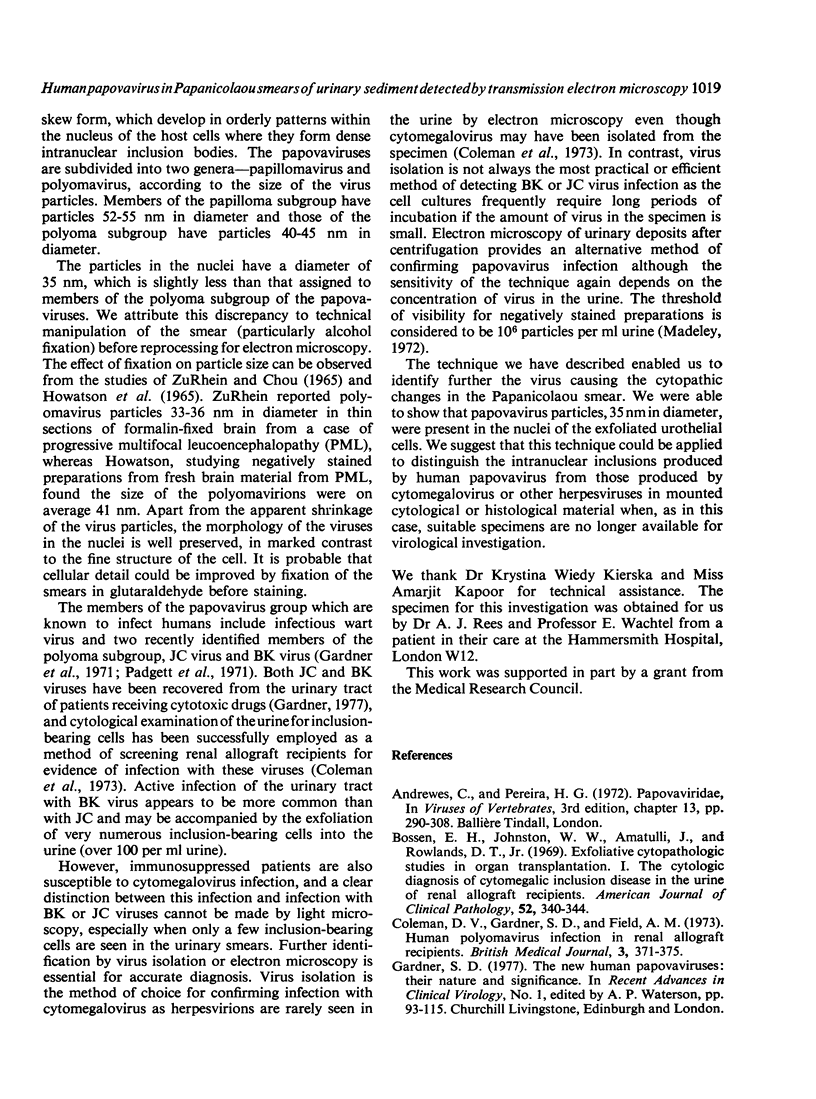

Images in this article
Selected References
These references are in PubMed. This may not be the complete list of references from this article.
- Bossen E. H., Johnston W. W., Amatulli J., Rowlands D. T., Jr Exfoliative cytopathologic studies in organ transplantation. I. The cytologic diagnosis of cytomegalic inclusion disease in the urine of renal allograft recipients. Am J Clin Pathol. 1969 Sep;52(3):340–344. doi: 10.1093/ajcp/52.3.340. [DOI] [PubMed] [Google Scholar]
- Coleman D. V., Gardner S. D., Field A. M. Human polyomavirus infection in renal allograft recipients. Br Med J. 1973 Aug 18;3(5876):371–375. doi: 10.1136/bmj.3.5876.371. [DOI] [PMC free article] [PubMed] [Google Scholar]
- Gardner S. D., Field A. M., Coleman D. V., Hulme B. New human papovavirus (B.K.) isolated from urine after renal transplantation. Lancet. 1971 Jun 19;1(7712):1253–1257. doi: 10.1016/s0140-6736(71)91776-4. [DOI] [PubMed] [Google Scholar]
- HOWATSON A. F., NAGAI M., ZURHEIN G. M. POLYOMA-LIKE VIRIONS IN HUMAN DEMYELINATING BRAIN DISEASE. Can Med Assoc J. 1965 Aug 28;93:379–386. [PMC free article] [PubMed] [Google Scholar]
- Padgett B. L., Walker D. L., ZuRhein G. M., Eckroade R. J., Dessel B. H. Cultivation of papova-like virus from human brain with progressive multifocal leucoencephalopathy. Lancet. 1971 Jun 19;1(7712):1257–1260. doi: 10.1016/s0140-6736(71)91777-6. [DOI] [PubMed] [Google Scholar]
- Rowden G., Lewis M. G. Experience with a three-hour electron microscopy biopsy service. J Clin Pathol. 1974 Jun;27(6):505–510. doi: 10.1136/jcp.27.6.505. [DOI] [PMC free article] [PubMed] [Google Scholar]
- ZURHEIN G., CHOU S. M. PARTICLES RESEMBLING PAPOVA VIRUSES IN HUMAN CEREBRAL DEMYELINATING DISEASE. Science. 1965 Jun 11;148(3676):1477–1479. doi: 10.1126/science.148.3676.1477. [DOI] [PubMed] [Google Scholar]



